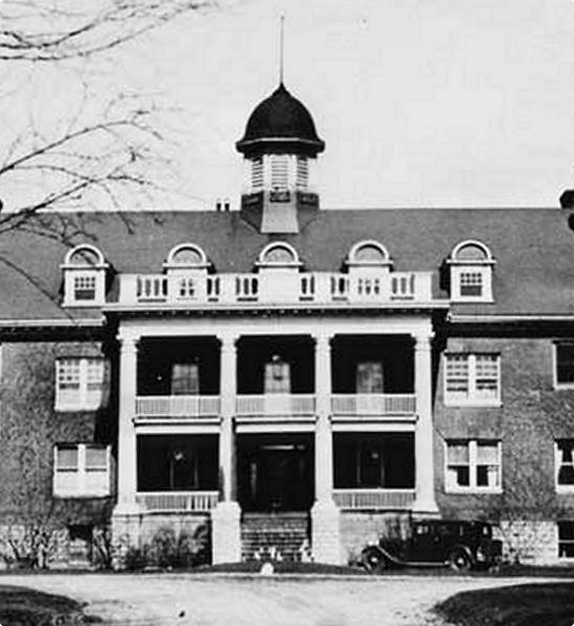In 2022, Survivors’ Secretariat hired Know History, a historical research service, to conduct archival research into the Mohawk Institute Indian Residential School. Know History and its team of researchers were brought on to help uncover, document, and share the truth of what happened at the Mohawk Institute during its 140+ years of operation.As documents are uncovered, a painful picture is painted about the conditions at the school and the attempts made by outside organizations to raise concerns regarding what the children were being subjected to on a regular basis. This new series in our newsletter, “Uncover, Document, Share” will provide a glimpse into the archival records being documented and reported on by Know History.
Milk and the Mohawk Institute
A glass of milk has long been a staple on Canadian dinner tables. But for the children at the Mohawk Institute, milk carried serious health risks. Between 1919 and 1953, concerns were repeatedly raised about the quality of milk being served at the school.
In 1919, Ontario’s Medical Officer of Health received an anonymous letter reporting that children at the Mohawk Institute were being served milk from cattle infected with tuberculosis, even though the health inspector had ordered the cows be destroyed to prevent the spread of disease.[1] The Department of Indian Affairs investigated and the Indian Agent contacted school principal Mary Alice Boyce.[2] She responded that the allegations were incorrect and may have come from a farm foreman she fired.[3] The Indian Agent confirmed
none of the milk from sickly cows was served to children and that “all proper precautions” were in place.[4]
Proper milk storage was also an issue. In 1948, the Brant County Inspector of Health found high levels of bacteria in the Mohawk Institute’s milk supply due to improper cooling and storage. The inspector threatened to ban milk service until proper precautions were in place.[5]
To prevent the spread of disease, the Province of Ontario passed a law in 1938 requiring that all milk in urban centres be pasteurized. This regulation was extended into rural areas in 1941. [6] However, in 1950, Mohawk Institute Principal W.J. Zimmerman, was still working out how to ensure that milk served at the school—which came from the school’s own cows—be pasteurized. Milk from the Institute’s on-site dairy herds would need to be delivered to a dairy for testing and pasteurization, then returned to the Institute for consumption—all of which would cost money. [7] Zimmerman estimated it would cost the Institute at least $3,5000 per year, which could fluctuate in the future. Still, the Indian Agent on Six Nations urged Zimmerman, “to proceed with plans to pasteurize the milk at once and later study the wisdom of continuing.”[8]
The nutritional value of milk being served at the Mohawk Institute was also called into question. In 1948, the Institute’s medical officer, Dr. Palmer, reported that children were given skim milk instead of whole, so that the fat could be turned into cream and sold for profit.[9]
However, as late as 1953, it was reported that children were still receiving skim milk at the Mohawk Institute.[10]
[1]
Letter from Anonymous to Dr.
Hastings, December 6, 1919, File 154,845, Part 1A, Volume 2771, RG10 Department
of Indian Affairs fonds, Library and Archives Canada (hereafter LAC), Ottawa,
Ontario, Canada.
[2]
Letter from Duncan C. Scott to John W.S. McCullough, December 11, 1919; Letter from Duncan C. Scott to
Gordon J. Smith, December 16, 1919; Letter from Gordon J. Smith to Duncan C.
Scott, December 29, 1919, File 154,845, Part 1A, Volume 2771, RG10 Department
of Indian Affairs fonds, LAC.
[3]
Letter from Alice M. Boyce to
Major Smith, December 24, 1919, File 154,845, Part 1A, Volume 2771, RG10
Department of Indian Affairs fonds, LAC.
[4]
Letter from Gordon J. Smith to
Duncan C. Scott, December 29, 1919, File 154,845, Part 1A, Volume 2771, RG10
Department of Indian Affairs fonds, LAC.
[5]
“Memorandum: Mohawk Institute
– Health Conditions,” June 2, 1948, File 466-1, Part 5, Volume 6200, RG10
Department of Indian Affairs fonds, LAC.
[6]
“Pasteurization and Dairy
Controls,” Fighting for Breath: Stopping the TB Epidemic, Museum of Health Care
at Kingston, accessed April 11, 2023,
https://www.museumofhealthcare.ca/explore/exhibits/breath/pasteurization.html.
[7]
Letter from MacNicoll’s
Limited to W.J. Zimmerman, August 1, 1950; Letter from Terrace Hill Dairy to
W.J. Zimmerman, September 5, 1919; “Pasteurization Costs,” File 479/6-1-001,
Part 1, Volume 8252, RG10 Department of Indian Affairs fonds, LAC.
[8]
Letter from W.J. Zimmerman to Colonel B.F. Neary, October 30, 1950, File 479/6-1-001, Part 1, Volume
8252, RG10 Department of Indian Affairs fonds, LAC.
[9]
“Memorandum: Mohawk Institute
– Health Conditions,” June 2, 1948, File 466-1, Part 5, Volume 6200, RG10
Department of Indian Affairs fonds, LAC.
[10]
“Report on Mohawk Residential
School,” November 25, 1953, File 479/6-1-001, Part 4, Volume 8252, RG10
Department of Indian Affairs fonds, LAC.
